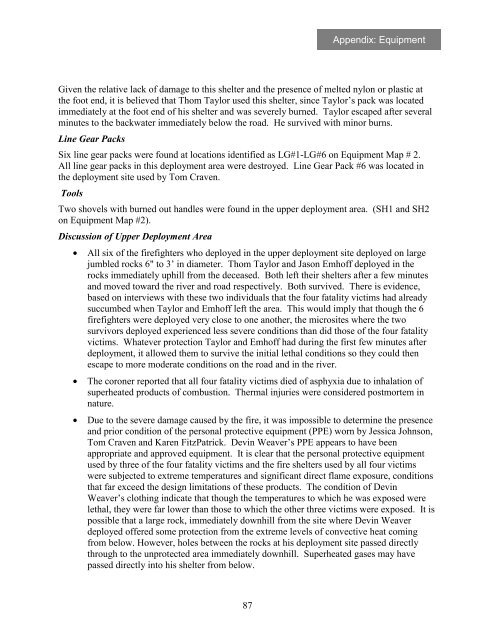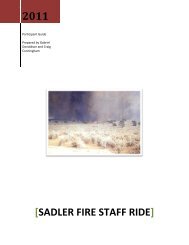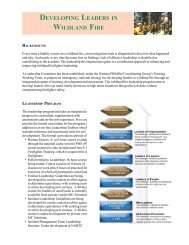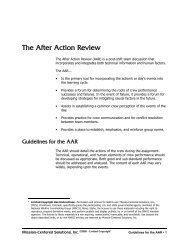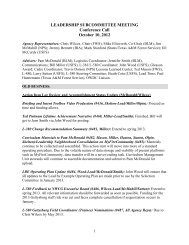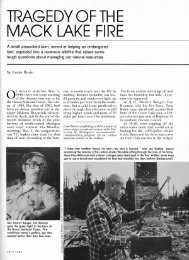Thirtymile Fire - USDA Forest Service
Thirtymile Fire - USDA Forest Service
Thirtymile Fire - USDA Forest Service
You also want an ePaper? Increase the reach of your titles
YUMPU automatically turns print PDFs into web optimized ePapers that Google loves.
Appendix: Equipment<br />
Given the relative lack of damage to this shelter and the presence of melted nylon or plastic at<br />
the foot end, it is believed that Thom Taylor used this shelter, since Taylor’s pack was located<br />
immediately at the foot end of his shelter and was severely burned. Taylor escaped after several<br />
minutes to the backwater immediately below the road. He survived with minor burns.<br />
Line Gear Packs<br />
Six line gear packs were found at locations identified as LG#1-LG#6 on Equipment Map # 2.<br />
All line gear packs in this deployment area were destroyed. Line Gear Pack #6 was located in<br />
the deployment site used by Tom Craven.<br />
Tools<br />
Two shovels with burned out handles were found in the upper deployment area. (SH1 and SH2<br />
on Equipment Map #2).<br />
Discussion of Upper Deployment Area<br />
• All six of the firefighters who deployed in the upper deployment site deployed on large<br />
jumbled rocks 6" to 3’ in diameter. Thom Taylor and Jason Emhoff deployed in the<br />
rocks immediately uphill from the deceased. Both left their shelters after a few minutes<br />
and moved toward the river and road respectively. Both survived. There is evidence,<br />
based on interviews with these two individuals that the four fatality victims had already<br />
succumbed when Taylor and Emhoff left the area. This would imply that though the 6<br />
firefighters were deployed very close to one another, the microsites where the two<br />
survivors deployed experienced less severe conditions than did those of the four fatality<br />
victims. Whatever protection Taylor and Emhoff had during the first few minutes after<br />
deployment, it allowed them to survive the initial lethal conditions so they could then<br />
escape to more moderate conditions on the road and in the river.<br />
• The coroner reported that all four fatality victims died of asphyxia due to inhalation of<br />
superheated products of combustion. Thermal injuries were considered postmortem in<br />
nature.<br />
• Due to the severe damage caused by the fire, it was impossible to determine the presence<br />
and prior condition of the personal protective equipment (PPE) worn by Jessica Johnson,<br />
Tom Craven and Karen FitzPatrick. Devin Weaver’s PPE appears to have been<br />
appropriate and approved equipment. It is clear that the personal protective equipment<br />
used by three of the four fatality victims and the fire shelters used by all four victims<br />
were subjected to extreme temperatures and significant direct flame exposure, conditions<br />
that far exceed the design limitations of these products. The condition of Devin<br />
Weaver’s clothing indicate that though the temperatures to which he was exposed were<br />
lethal, they were far lower than those to which the other three victims were exposed. It is<br />
possible that a large rock, immediately downhill from the site where Devin Weaver<br />
deployed offered some protection from the extreme levels of convective heat coming<br />
from below. However, holes between the rocks at his deployment site passed directly<br />
through to the unprotected area immediately downhill. Superheated gases may have<br />
passed directly into his shelter from below.<br />
87


